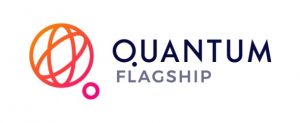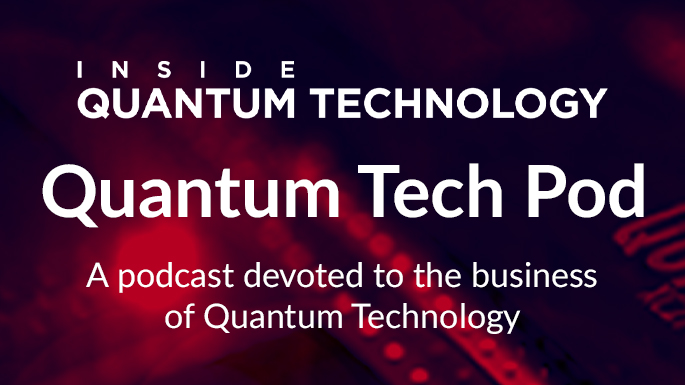Quantum News Briefs July 5: Fujitsu and ANU Sign MoU for quantum computing collaboration in Australia • Is Quantum Computing a solution for AI scaling? • Quantum Flagship offering testing and piloting services • Fraunhofer analyzes how ‘quantum-secure’ communication technologies will develop in the future •

News Briefs:
Fujitsu and ANU Sign MoU for quantum computing collaboration in Australia
Fujitsu announced in a news release July 5 that Fujitsu Australia Limited and the Australian National University (ANU) in Canberra concluded a memorandum of understanding (MoU) to ensure that industry and government professionals, researchers, academics, and students in Australia will soon have access to a world-class quantum research facility. The agreement will see the two organizations partner to establish a center for quantum research, with ambitions to build an onsite quantum computer.
As part of the collaboration, Fujitsu will provide ANU researchers and academics with access to Fujitsu’s quantum systems and simulators in Japan. To drive further innovation, Fujitsu, through collaboration with RIKEN, plans to release a 256-qubit quantum computer in March 2025 and a quantum computer with as many as 1000 qubits in fiscal year 2026, cementing ANU’s ongoing access to the latest in cutting-edge quantum technology.
Under the new collaboration, ANU will develop teaching and training modules based around access to Fujitsu’s quantum technologies to further inform the overall approach to research into quantum computing.
In Other News: Venture Beat asks: “Is Quantum Computing a solution for AI scaling?”
 Venture Beat’s Sean Michael Kerner explains there are many options to the power issue other than building more power generation capacity in his July 4 Venture Beat article focused on the danger that the cost of scaling infrastructure may possibly limit AI’s future.
Venture Beat’s Sean Michael Kerner explains there are many options to the power issue other than building more power generation capacity in his July 4 Venture Beat article focused on the danger that the cost of scaling infrastructure may possibly limit AI’s future.
Among the options is the integration of other types of non-traditional computing platforms, such as Quantum Computing.
“Current AI systems are still being explored at a rapid pace and their progress can be limited by factors such as energy consumption, long processing times, and high compute power demands,” Jamie Garcia, director of Quantum Algorithms and Partnerships at IBM told VentureBeat. “As quantum computing advances in scale, quality, and speed to open new and classically inaccessible computational spaces, it could hold the potential to help AI process certain types of data.”
Garcia noted that IBM has a very clear path to scaling quantum systems in a way that will deliver both scientific and business value to users. As quantum computers scale, he said they will have increasing capabilities to process incredibly complicated datasets.
Quantum Flagship offering testing and piloting services
 The Quantum Flagship projects Qu-Test and Qu-Pilot are dedicated to developing, upgrading, and providing infrastructure for quantum technology testing and pilot production facilities across Europe. Through their open call, these projects offer EU-based quantum technology companies access to essential services without requiring substantial early-stage infrastructure investments.
The Quantum Flagship projects Qu-Test and Qu-Pilot are dedicated to developing, upgrading, and providing infrastructure for quantum technology testing and pilot production facilities across Europe. Through their open call, these projects offer EU-based quantum technology companies access to essential services without requiring substantial early-stage infrastructure investments.
What: The Call is open to all EU companies in search of support services incorporating cutting-edge technologies in quantum computing, communication, and sensing.
Who? The Call is open to companies of all sizes. The applying companies must be established in one of the member states of the European Union, Iceland, Norway or Israel, with majority ownership and control therein.
When? The Call will be open from 1st June 2024 until 31st March 2025. Applicants can apply anytime within this interval.
The services are for free (100% funded).
Fraunhofer-Gesellschaft Study analyzes “How will ‘quantum-secure’ communication technologies develop in future?”
Fraunhofer ISI and Saarland University have analyzed three generations of quantum communication in a new study as part of the Umbrella Project for Quantum Communication in Germany (SQuaD, as per a July 4 article by Anne-Catherine Jung, of Fraunhofer-Gesellschaft. The study’s quantitative monitoring gives insights into patent development, projects future growth, and compares international research strategies.
The study considers three generations of quantum communication. The first generation—quantum key distribution (QKD). In the second generation, quantum key distribution (QKD) with photonic entanglement sources, The third generation includes the development of quantum repeaters, which enable entanglement distribution over longer distances.
The biggest share of recent patent applications were from the EU (35%), followed by the U.S. (29%) and China (15%). Even if industry dominates these patent applications with a share of approx. 70%, the technology continues to be strongly driven by research organizations (approx. 30%).
Most of the analyzed studies project annual growth rates of between 15 and 25%. Furthermore, the analysis of international research and innovation strategies shows that, in addition to Germany and the EU, China, the U.S., the UK, Japan and South Korea have recognized the strategic importance of quantum communication and have set up relevant funding programs.



















